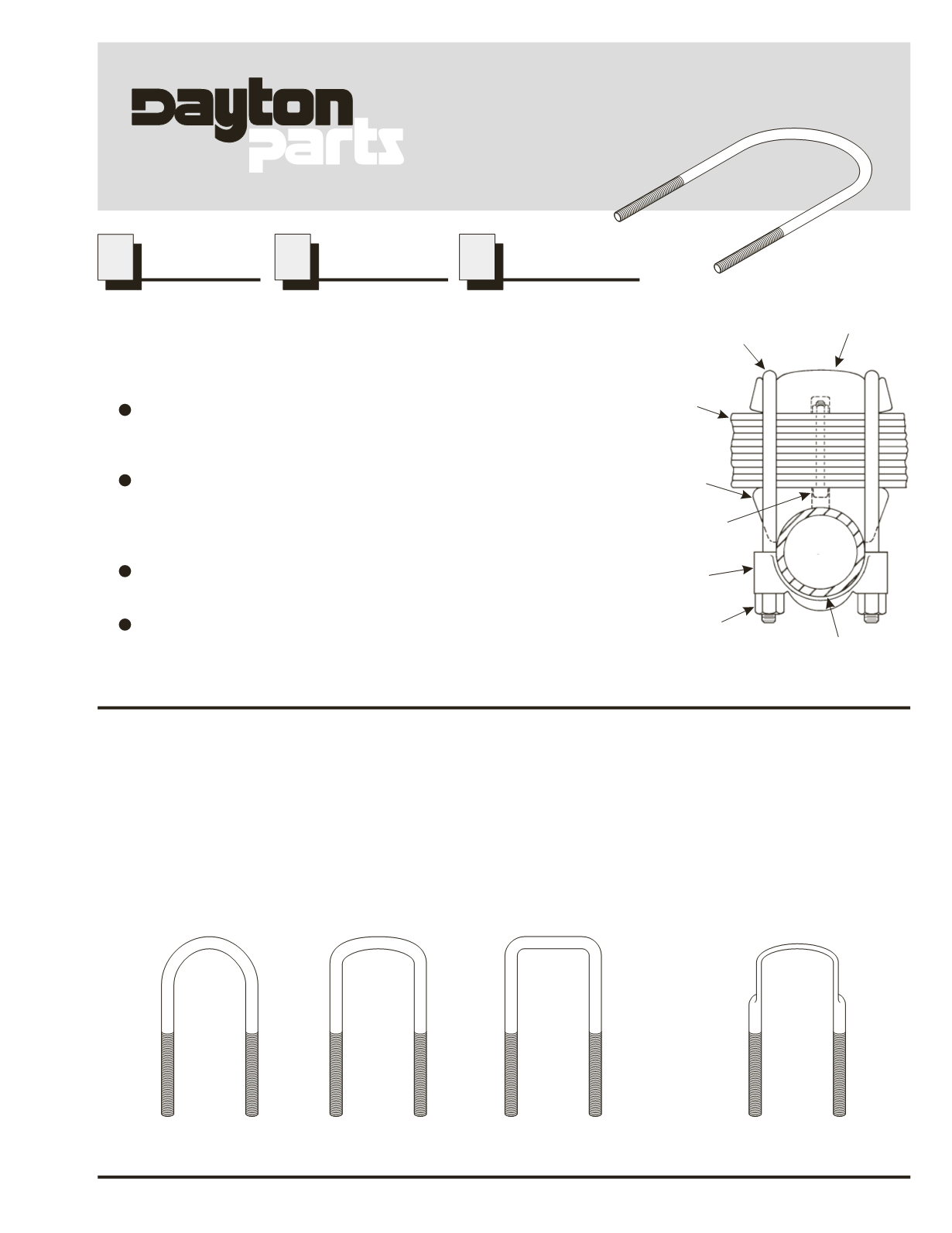

TM
U-Bolts
PEP Program No. 8
June, 2001
(revised)
www.daytonparts.comP
E
P
RODUCT MPHASIS ROGRAM
What does a U-bolt do?
A U-bolt serves in four critical and related roles:
Primarily, the U-bolt provides the force required to clamp the leaf spring and
related components firmly together. In addition to the leaf spring, these
components include the top plate, axle seat, axle and bottom plate.
The properly installed U-bolt eliminates any flexing of the leaf spring in the area
between the U-bolts. This is particularly critical since the hole for the centerbolt
in each leaf acts as a stress concentration which would lead to rapid leaf
breakage if spring flexing was not totally eliminated by the U-bolt clamping force.
By firmly clamping the spring to the axle seat the horizontal forces acting on the
centerbolt are greatly reduced which in turn prevents shearing of the centerbolt.
Proper clamping of the spring by the U-bolts provides the desired spring stiffness
and contributes to maintaining the vehicle ride height and handling
characteristics as originally specified for the vehicle.
Leaf
Spring
Assembly
Axle
Seat
Axle
Deep
Nut
Bottom
Plate
U-Bolt
Centerbolt
Top Plate
Types of U-bolts
Round Bend
Semi-Round Bend
Square Bend
1
Forged Top
Semi-Round Bend
Additionally, each of these bend types may use forged material. This is used primarily where additional clearance is
required between the U-bolts and, for example, the frame.
1. Round Bend
2. Semi-Round Bend
3. Square Bend
Three basic types of bends are used on U-bolts depending on the suspension design and the shape of the mating parts:















